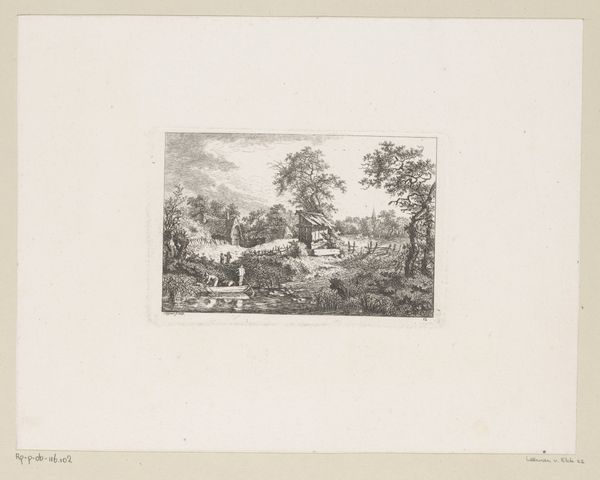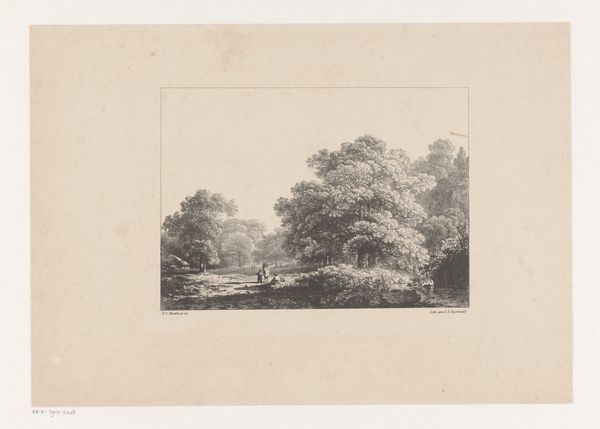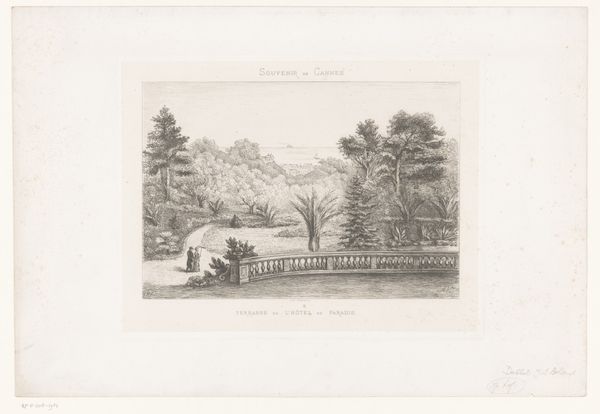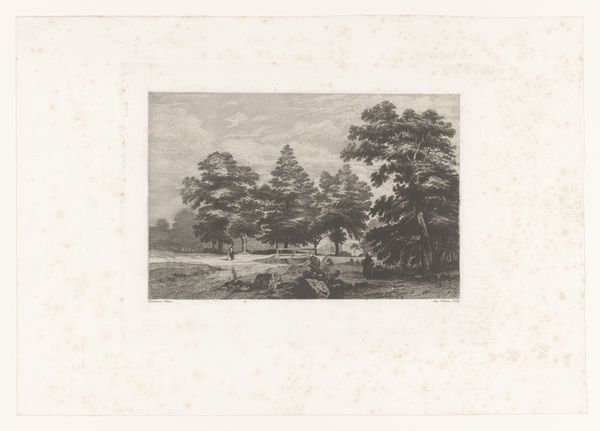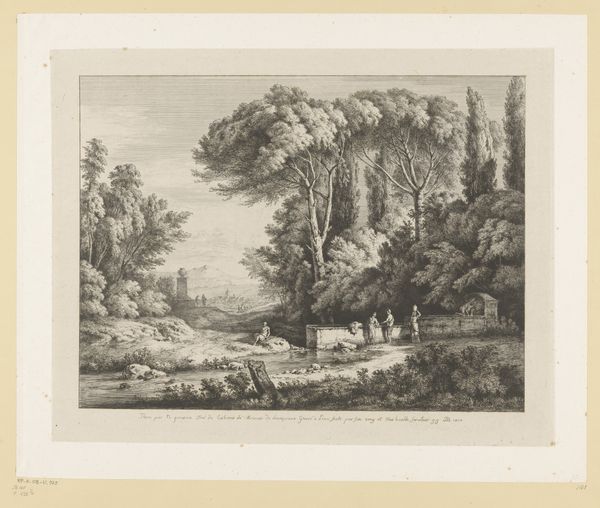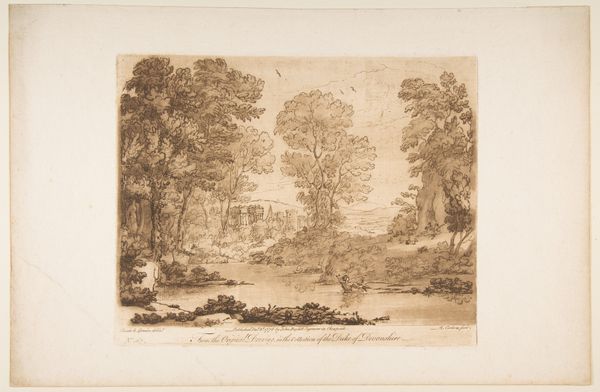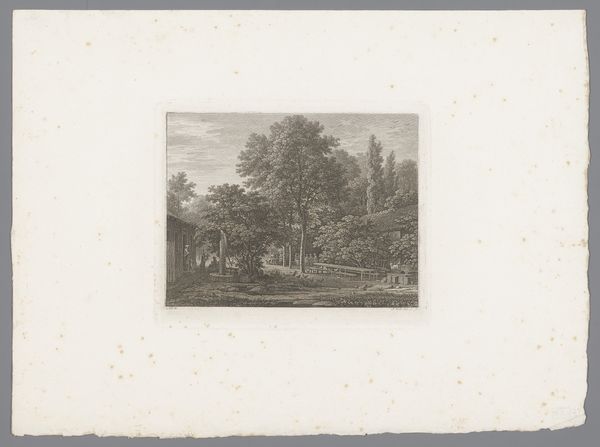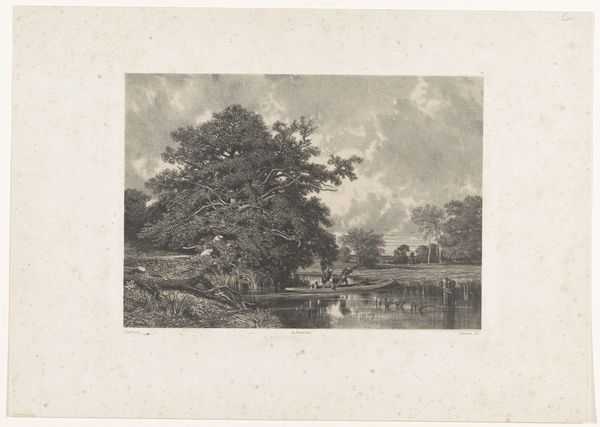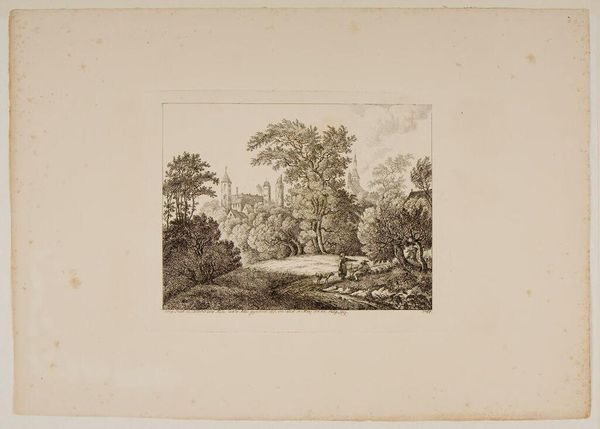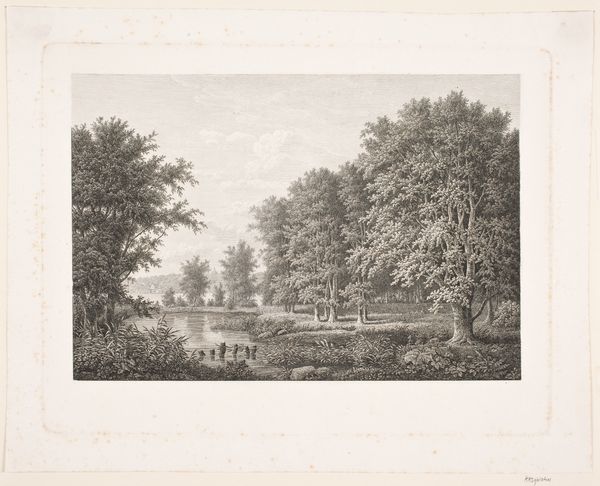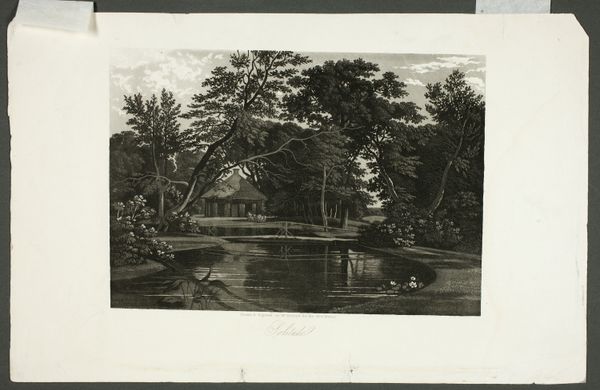
print, etching
# print
#
etching
#
landscape
#
romanticism
Dimensions: 173 mm (height) x 227 mm (width) (plademaal)
Editor: This is "Flood Between Wooded Banks," an 1847 etching by Peter Christian Schøler. The textures he achieves are really incredible. There's a stillness in the image, but also a looming quality from the sky...What do you see in this piece? Curator: What strikes me immediately is the symbolic interplay between the controlled and the untamed. We see nature presented as picturesque and sublime but there is an acknowledgement of its inherent power with that slight suggestion of a threatening storm. The forest is deep and shadowy, hinting at unknown depths and secrets. Editor: Do you think that contrast would be obvious to viewers at the time? Curator: I believe so. In the Romantic era, landscapes weren’t simply about depicting scenery. They were vehicles for expressing emotions, spiritual longing, and a fascination with the sublime – both beauty and terror – within nature. Look at the path, how it meanders, leading the eye, beckoning towards an unseen future, or a personal spiritual quest, almost like a baptism. Editor: The path leads right up to the building… Curator: The building becomes a potent symbol; it stands at the border between tamed nature and the encroaching wilds. A potent symbol of home, haven, of safety within a larger sense of potentially destructive environment. A refuge. A sense of needing protection within overwhelming forces. The path is leading somewhere in their lives. Editor: So, it's not just a pretty picture; it's meant to be symbolic. I never would have picked up on that! Curator: Exactly! Romantic landscapes use imagery as language, a vocabulary for the soul. Consider the viewer, projecting their emotional state onto this scene; a kind of mirror. This image acts as a touchstone that viewers could then engage with as an active process, with symbols evoking much deeper meanings than we now realize. Editor: That’s really insightful, thank you for sharing your expertise. It certainly gave me a new way to look at 19th-century art. Curator: It’s been a pleasure, a conversation around art that speaks even now to our anxieties and yearnings!
Comments
No comments
Be the first to comment and join the conversation on the ultimate creative platform.
